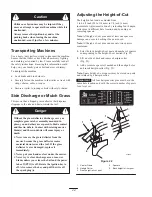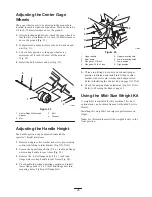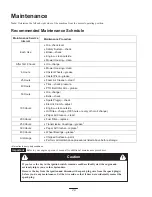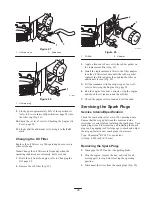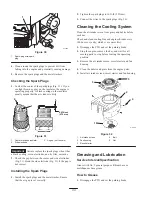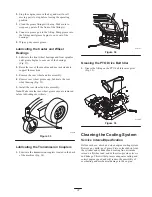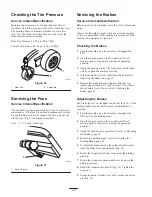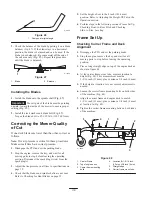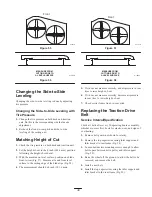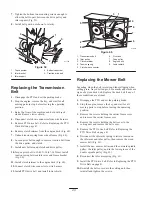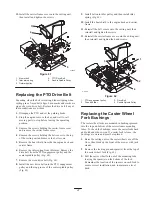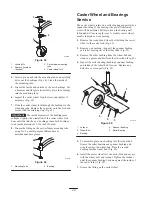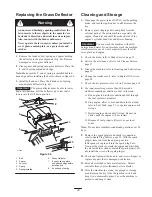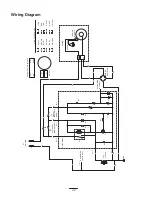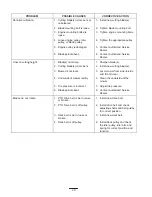
38
Checking the Deck
Front-to-Rear Pitch
1. Check the tire pressure on both deck and traction unit.
2. Position one blade front-to-rear (Fig. 52). Measure at
C and D locations (Fig. 52) from a level surface to the
cutting edge of the blade tips (Fig. 53).
3. The mower blade should be 1/4 inch (6 mm) lower in
front at C than in the rear at D. Rotate blades and
repeat for other blades. If it is not correct, proceed to
Changing the Deck Front–to–Rear Pitch.
m–1078
Front
C
C
D
D
Figure 52
MEASURE FROM CUT-
TING EDGE TO A LEV-
EL SURFACE
m–1087
Figure 53
Changing the Deck
Front-to-Rear Pitch
Changing the front–to–rear pitch is done by adjusting the
front height–of–cut posts.
Changing the Deck Front–to–Rear Pitch
by Adjusting Front Height–of–Cut Posts
1. To change the front-to-rear pitch, the front
height–of–cut posts can be adjusted (Fig. 54).
2. To raise the front of the deck, loosen jam nut and
rotate the front pin clockwise (Fig. 54).
3. To lower the front of the deck, loosen jam nut and
rotate the front pin counter clockwise (Fig. 54).
3
m–6371
1
2
4
5
Figure 54
1.
Caster Wheel
2.
Carrier Frame
3.
Front height–of–cut pins
4.
Jam nut
5.
Ball joint
4. Position the blades front-to-rear (Fig. 52). Measure at
C and D locations (Fig. 52) from a level surface to the
cutting edge of the blades (Fig. 53).
5. Check the side-to-side leveling of the cutting unit.
Checking the Deck
Side-to-Side Leveling
1. Check the tire pressure on both deck and traction unit.
2. Position the blades side-to-side (Fig. 55). Measure at A
and B locations (Fig. 55) from a level surface to the
cutting edge of blade tips (Fig. 56).
3. The difference between measurements A and B should
be no more than 1/4 inch (6 mm).

